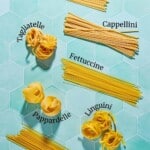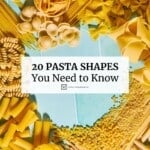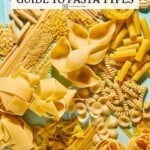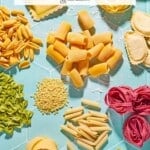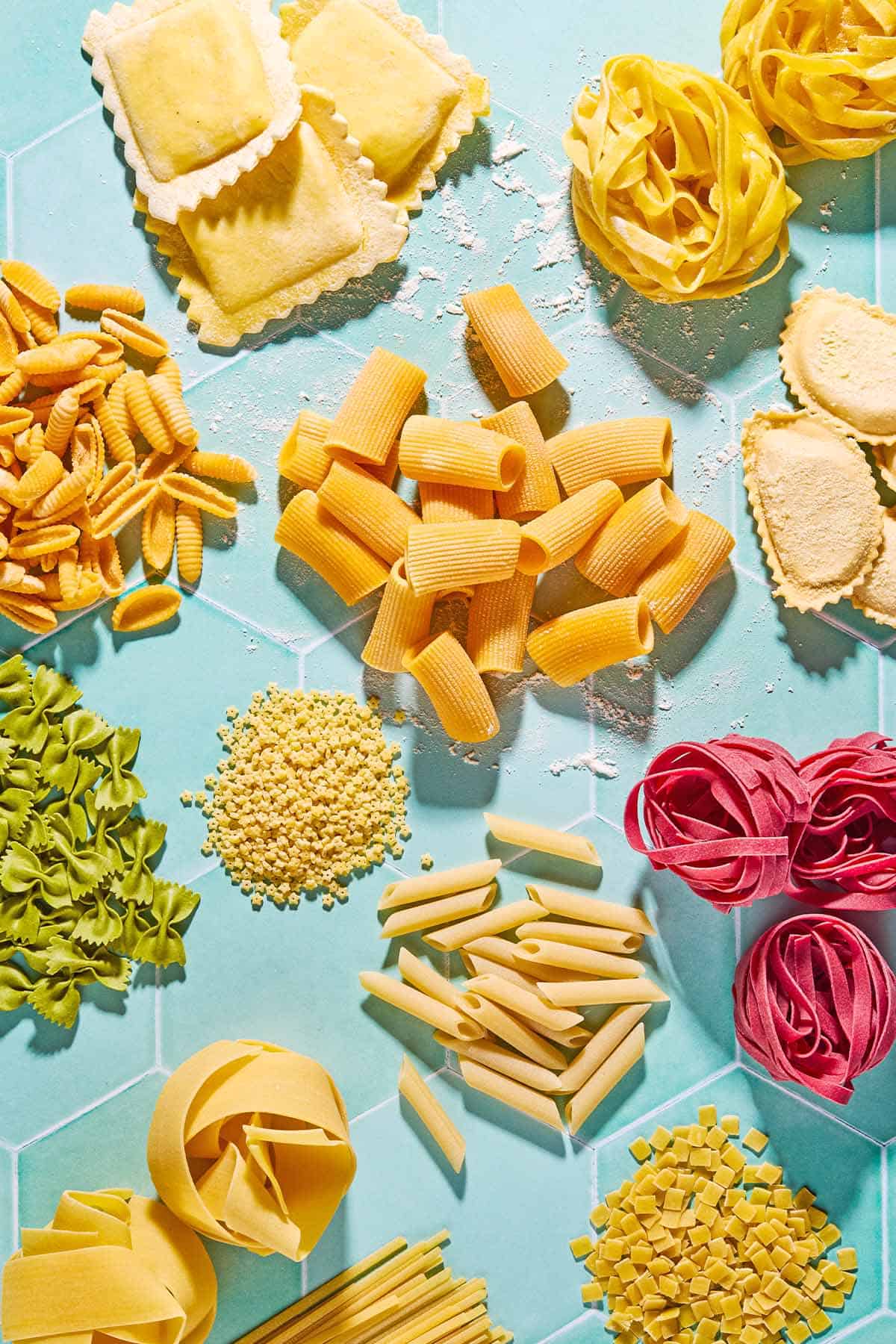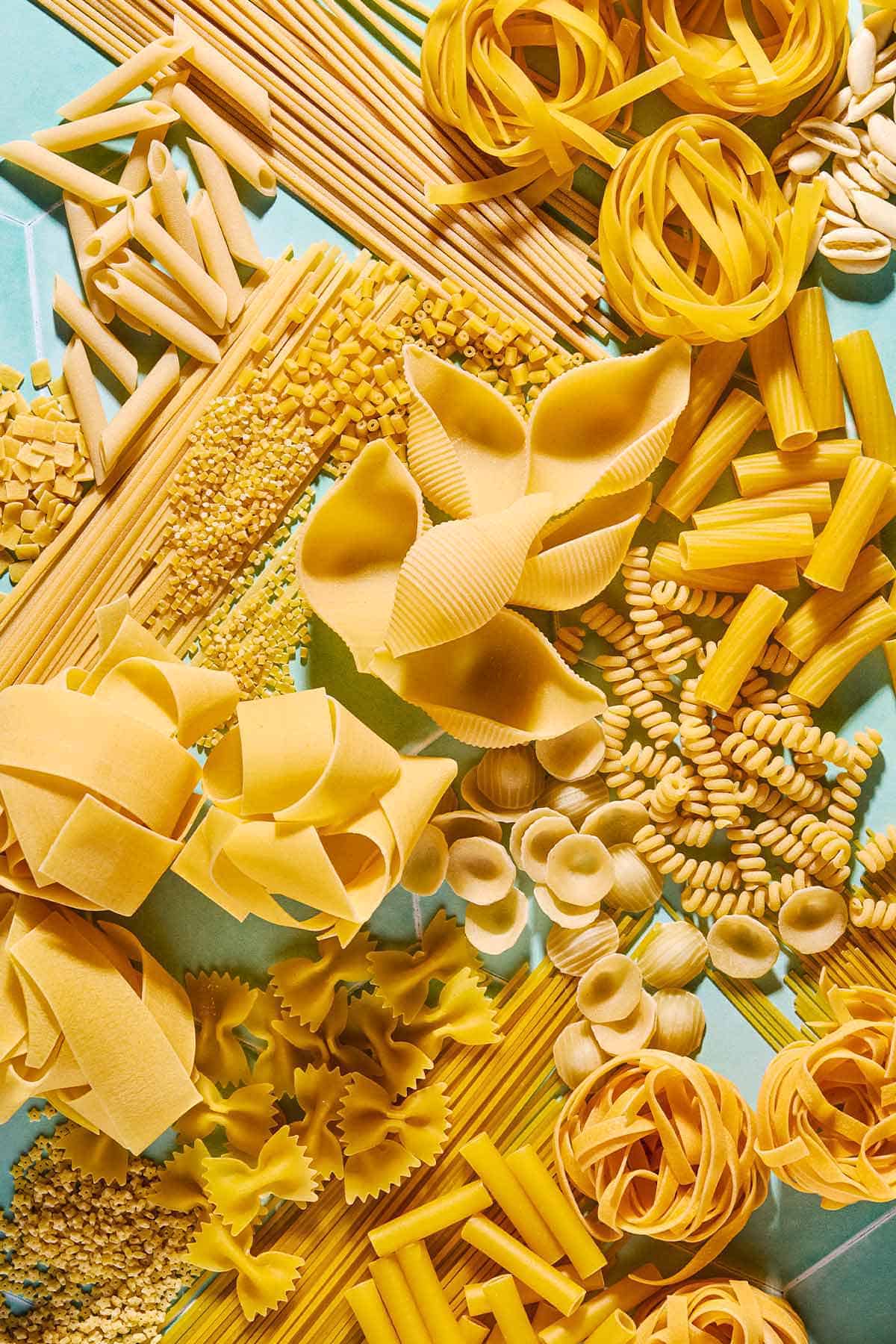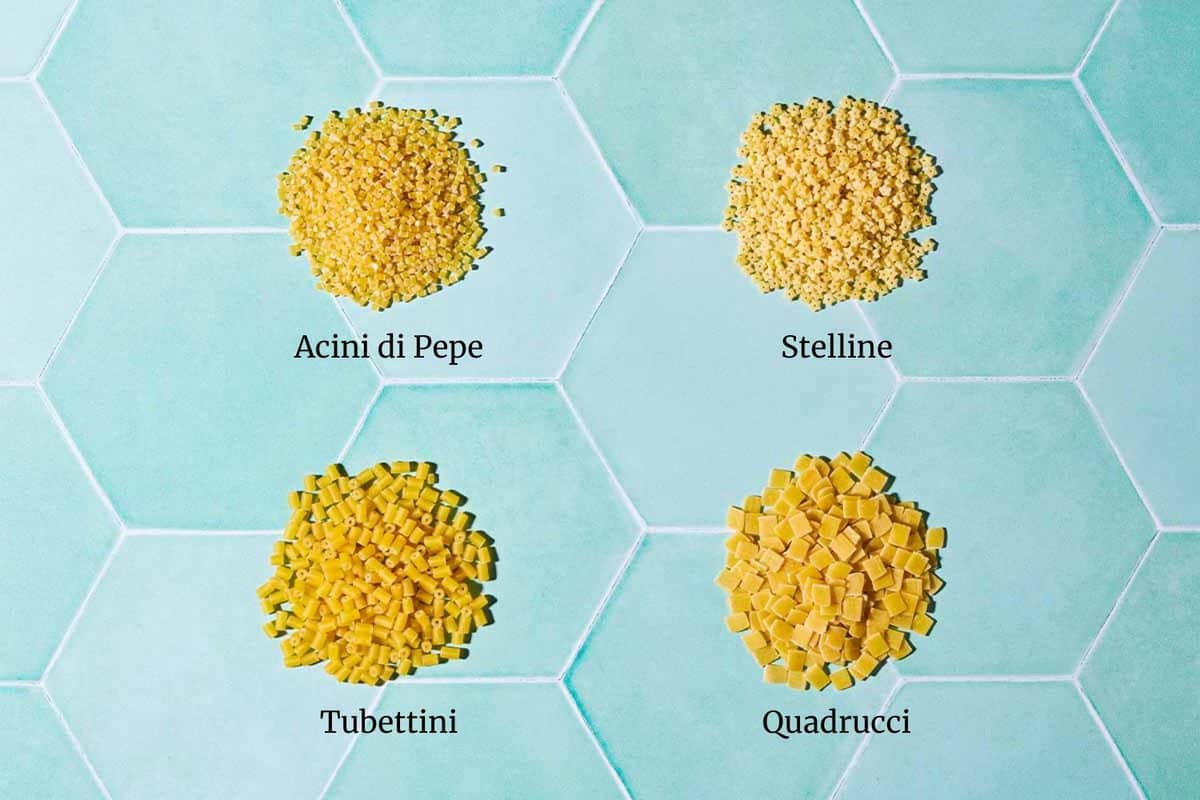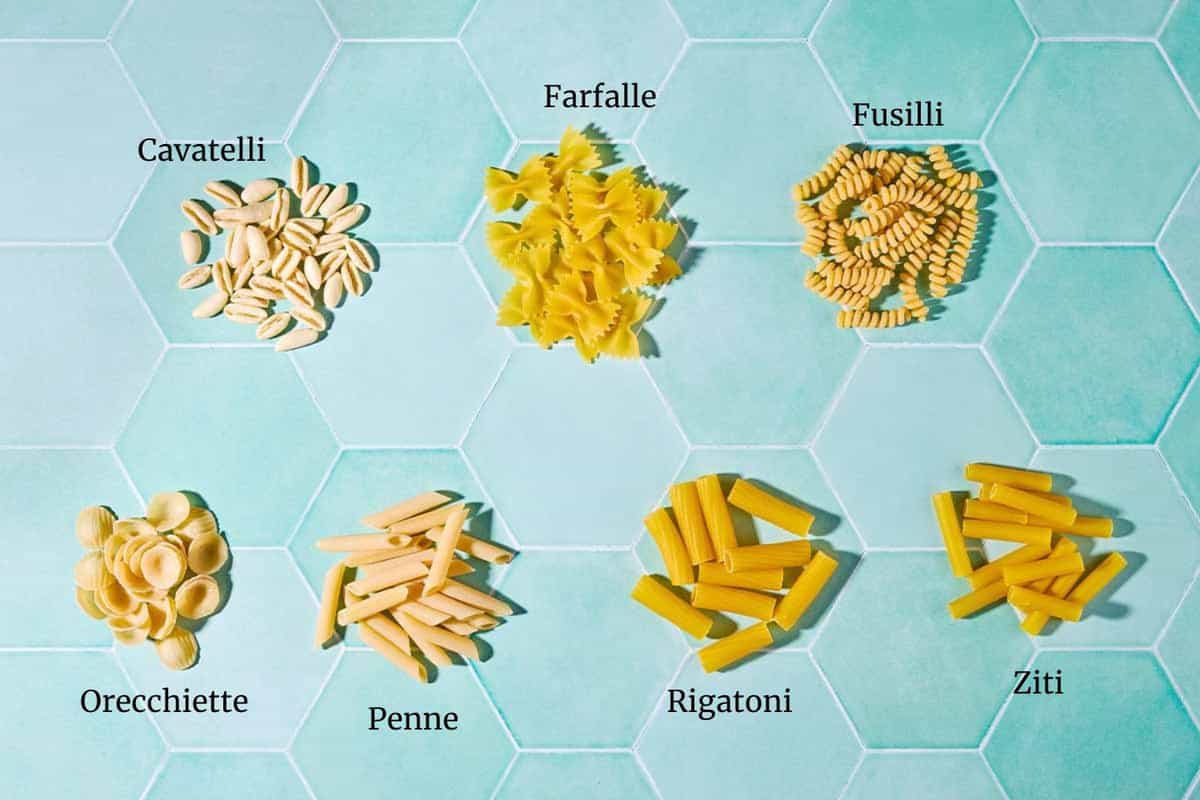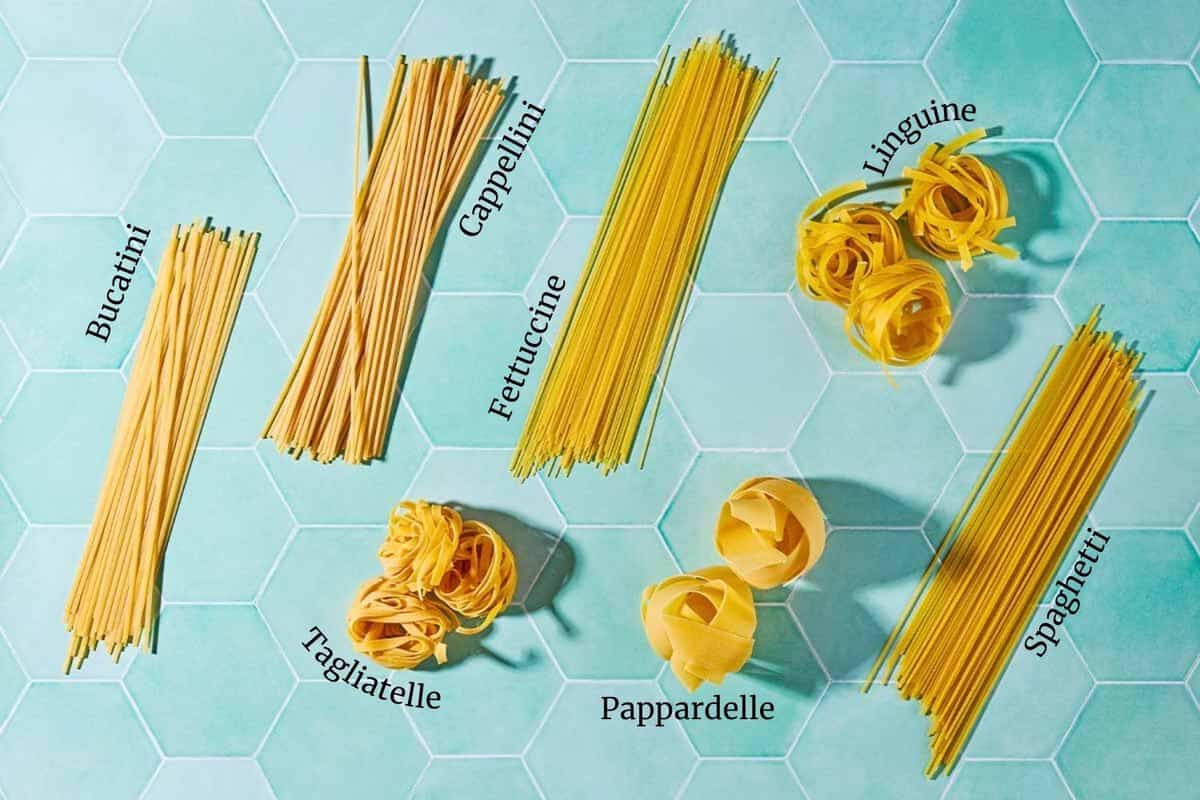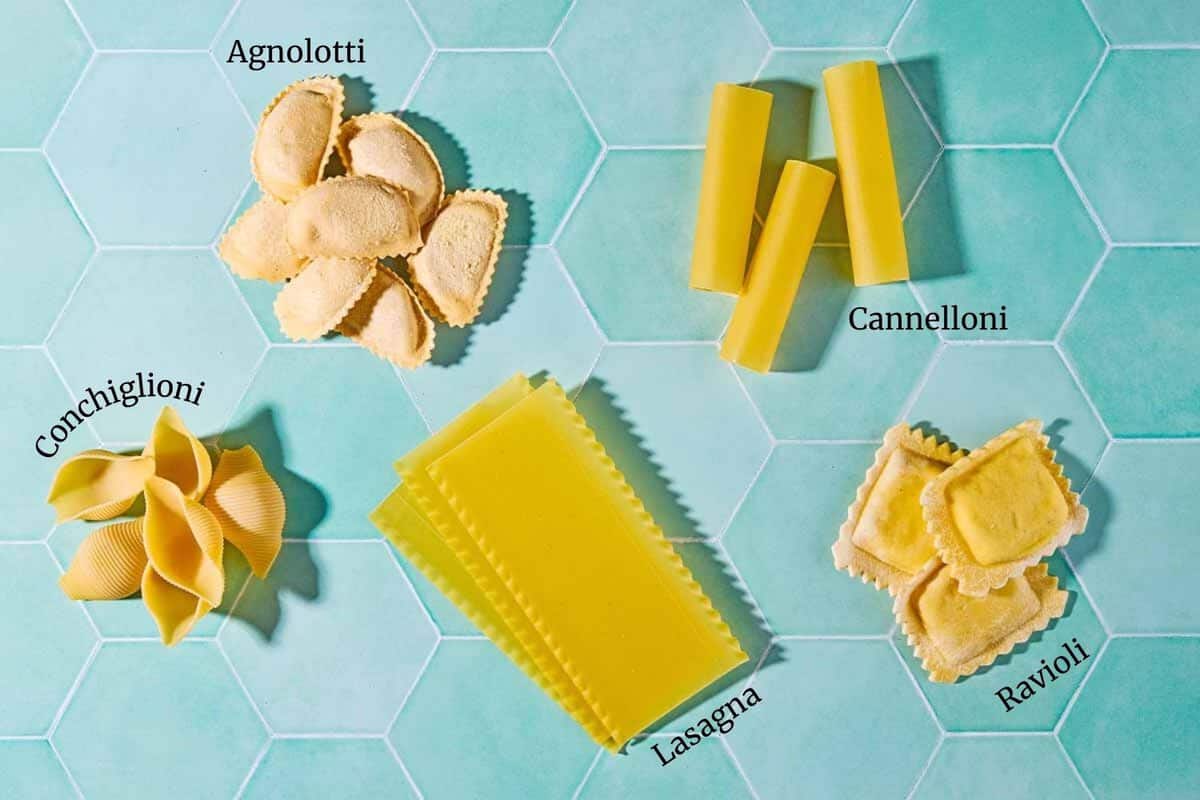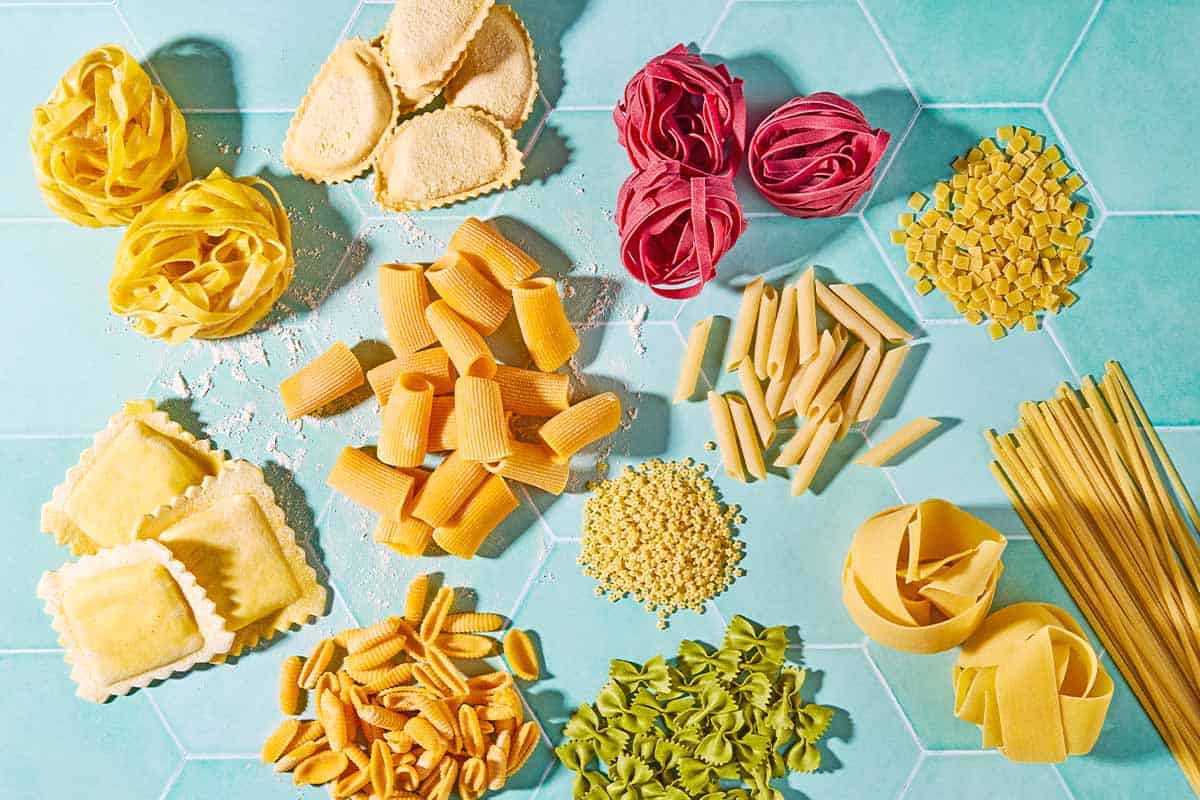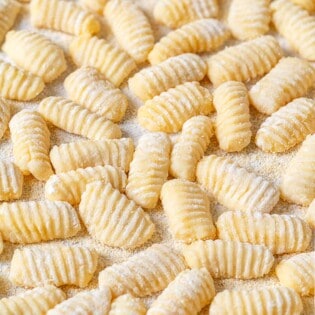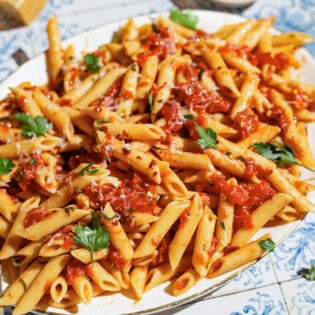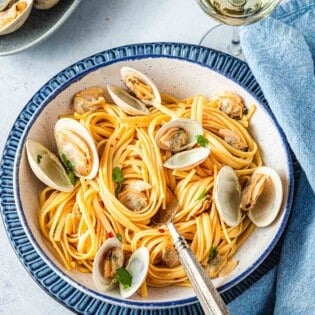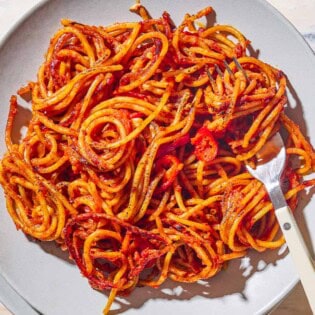The world of pasta shapes is wide and wonderful, filled with whimsical shapes, from acini di pepe (tiny pastina “peppercorns” ) to ziti (longish tubes), and countless sauces with which to dress them—ike Pomodoro and Pesto, just to name a few. Even as someone who grew up in an Italian household and wrote an entire book on the subject–The Glorious Pasta of Italy—the types of pasta can also be a confusing world. What’s the difference between anellini and anolini, or anolini and agnolotti? Are fettuccine and tagliatelle just different names for the same flat noodle? Which is better: fresh pasta or dried? What’s the best pasta for ragù, and which shapes belong in soup? This comprehensive guide, drawn from my lifetime of experience and personal fascination with all things pasta, breaks it down for you!
Dried Pasta vs Fresh Pasta
Is fresh pasta better than dried pasta? I get this question often. The short answer is: No, one pasta type isn’t better than the other; they are just different. Here’s what to know about each.
What Is Dried Pasta?
Most commercial dried pasta is made from a mix of durum wheat flour (semolina) and water. It’s sold in boxes or packets. When you make a basic pot of spaghetti using boxed pasta, this is generally what you’re using. Dried pasta is made by extruding the semolina and water dough through dies or cutters to form any number of shapes, from spaghetti to rigatoni to tiny pastina. The extruded pasta is dried over hours to days before being packaged for sale. Dried pasta made with flour and eggs is also available commercially, but it is more fragile and perishable.
What is Fresh Pasta?
If you’re making pasta at home, you are making fresh pasta. At its most basic, fresh pasta is pasta that has not been dried. You can make fresh pasta from semolina and water, then cook it before it dries or use flour and eggs. The most well-known type of fresh pasta is pasta all’uovo, which is made with finely ground soft wheat flour (“00” flour) and eggs. Making fresh egg pasta at home is easy: just mix “00” pasta flour or all-purpose flour with eggs and knead it until it comes together. You can do this by hand on a countertop, in a stand mixer, or in a food processor. Then roll and cut the dough, either by hand or by using a pasta machine.
Pasta Shapes: The Breakdown
Organizing pasta shapes into categories helps clear up confusion about how best to sauce and serve. Follow our handy guide and you’ll quickly become fluent in the language of pasta.
Small Pasta Shapes (Pastina)
Small pasta shapes called Pastina are almost always meant for soup. Their diminutive size doesn’t stand up to heavy sauces, and they are best eaten with a spoon. All of these small shapes are delicious in brothy soups. My favorite way to enjoy pastina is cooked in homemade chicken broth, with lots of freshly grated Parmigiano cheese stirred in.Pastina is the tiniest shape. Italians cook them in broth for babies just starting to eat solid food. However, adults love it, too. You will, too, once you make our Pastina Soup.
Acini di pepe: Peppercorns. Stelline: Little stars. Quadrucci: Tiny squares. Tubettini: Tiny tubes.
Slightly larger—but still small—shapes, such as conchigliette (small to medium shells), ditalini (short tubes), go well in hearty vegetable soups, Minestrone, and pasta with beans or legumes. Try them in our recipe for Pasta e Ceci—pasta and chickpeas.
Short to Medium Pasta Shapes and Tube-Shaped Pasta
This is a large category of sturdy, tubular, and spiraled shapes that are generally short to medium in length. These shapes play well with hearty tomato sauces, pestos, and some ragús. They make delicious baked pasta dishes, and they’re great for pasta salads because they can be easily speared with a fork. Here are some of our favorites, and suggestions for how to use them:
Cavatelli: The word comes from cavare, which means “to dig out.” This sturdy oval shape with rolled edges and a depression in the center, originated in Puglia. They are typically paired with tomato and meat sauces, seafood sauces, cooked greens, and Pesto. Farfalle: Rectangular pieces of pasta are pinched in the middle to resemble butterflies or bow ties. This shape pairs well with tomato, cream, and vegetable sauces, and makes a pretty pasta salad, like our Greek Pasta Salad. Fusilli: These tightly twisted spirals pair well with vegetable, meat, or cheese sauces, and are great in pasta salads like this Italian Pasta Salad. You can also use cavatappi (corkscrews) and gemelli (twins) in place of fusilli for a similar effect. Orecchiette: This popular bowl-shaped pasta is basically if you turn cavatelli inside-out. Like cavatelli, orecchiette hail from Puglia. These little pasta cups are great at holding meat and tomato sauces, but they are most famously paired with cooked broccoli rabe and crumbled sausage. For a modern twist, try our Orecchiette with White Beans, Tomatoes, and Olives. Penne: Short, sturdy tubes cut on the diagonal to resemble quills, penne can be either smooth (penne lisce) or ridged (penne rigate). Find them in one of Naples’s most famous spicy pasta dishes: Penne all’Arrabbiata—“angry” penne. Rigatoni: This tubular pasta is similar to penne, but wider and with straight-cut, rather than diagonal, ends. They are delicious in Pasta alla Norma, a Sicilian pasta dish with eggplant. Ziti: The quintessential shape for baked dishes, ziti are medium-sized tubes with straight-cut ends. Try them in our vegetarian baked ziti or this classic baked ziti with sausage and fresh mozzarella.
Long Pasta
There are many different types of long pasta, probably more than you think. From thin angel hair pasta to fat bucatini to flat, wide pappardelle, long pasta is always satisfying to twirl and eat. And depending on their thinness or thickness, they go well with a wide range of sauces.
Bucatini: These long, thick, noodles with a hole pierced through the center are fun to slurp up. They are typically paired with a sauce of tomatoes and guanciale—cured pork jowl—in one of Rome’s most iconic pastas: Bucatini all’Amatriciana. Cappellini: Also known as angel hair pasta, this fine, quick-cooking noodle is best with fresh, light tomato sauce. Italians also break capellini into small pieces and cook them in broth for a comforting soup. Fettuccine: Flat, long ribbons, fettuccine pairs beautifully with butter and cream-based sauces. Linguine: These slim, flat-ish noodles have an appealing slipperiness to them. They star in one of my all-time favorite pairings: Linguine with Clams. Tagliatelle and Pappardelle: These two wide noodles are classic shapes from Bologna. Tagliatelle is slightly wider than fettuccine, and pappardelle is the widest of all—about 3/4-inch wide. Both are traditionally paired with rich Bolognese meat sauce. Spaghetti: This long, round noodle is undoubtedly the most well-known pasta shape. It is also the most versatile, pairing well with most sauces, from simple Spaghetti Aglio e Olio and Pasta al Pomodoro to Cacio e Pepe with Shrimp and Spaghetti Pie. Other shapes in this sub-category include spaghettini, a slightly thinner version of spaghetti; and Spaghetti alla Chitarra, a square-cut noodle from the Abruzzo region that is served with both meat ragùs and seafood-based sauces.
Types of Pasta: Stuffed Pasta Varieties
We are all familiar with ravioli, but the world of stuffed pasta is actually quite diverse, not to mention delicious. Here are some of my favorites, along with sauce-pairing suggestions.
Agnolotti: These bite-sized stuffed pillows hail from Piedmont. They are typically filled with finely chopped roast meat and sauced either with the juices from the roast meat or with a simple melted butter and sage sauce. Cannelloni: Also known as manicotti, these large pasta tubes are perfect for stuffing with meat and/or cheese and saucing with a simple, smooth tomato sauce. You can make cannelloni with fresh pasta sheets, rolled cigar-style around the stuffing; or you can buy dried cannelloni or manicotti. Try our three-cheese Manicotti Recipe. Conchiglioni: Also known as jumbo shells, this shell-shaped pasta is Italian comfort food at its best. Stuff and bake them as you would cannelloni or manicotti. Lasagna: Technically, lasagna sheets are layered rather than stuffed—though you can roll them up like cannelloni to make these Vegetarian Lasagna Roll Ups. One of the most beloved traditional lasagna preparations is Lasagna all Bolognese, in which thin spinach lasagna sheets are layered with Bolognese ragù and bechamel sauce. Ravioli: Typically square, but also round or half-moon shaped, ravioli can be filled with ground meat or cheese, or a combination of cheese and vegetables—spinach and winter squash are two of my favorite vegetable fillings. If you’re not up for making your own, you can use store-bought ravioli to make this 10-Minute Creamy Pesto Ravioli recipe.
Pasta Color Variations
Variation doesn’t end at pasta shapes. There are also many variations of fresh egg pasta colors. If you use eggs with deep orange yolks, your pasta will be more golden; if the yolks are pale, the pasta will be paler in color. If you make pasta at home, adding a pinch of turmeric or saffron (like the Moroccan saffron from our shop) will enhance the golden color. Other colorful pasta has become more popular in recent years, though it is a long-standing tradition in parts of Italy. The most well-known version is spinach pasta, made by kneading puréed cooked spinach into the egg dough. Puréed pumpkin or beets are also popular natural coloring ingredients for pasta.
The Wild World of Pasta Shapes and Sauces
For me, much of the appeal of the types of pasta is in the shapes of the noodles themselves. There are hundreds of shapes, some dating back centuries, others much newer. I take this wide world of pasta shapes as an invitation to play around in the kitchen, and to try different shapes with different sauces. Italians are serious about these rules. And, in fact, they make sense for the most part. Some pasta shapes are best suited for soup, while others are meant for light tomato or cream sauces. Short, sturdy pastas stand up to robust sauces, but so do wide noodles. Within the “rules” or guidelines, there is plenty of room for flexibility and experimentation—see my Cacio e Pepe with Garlic Shrimp for a great example of when breaking the rules pays off. And the more you familiarize yourself with pasta shapes and sauces, the more you will be able to tell intuitively which go together. Browse all Mediterranean recipes.
How to Make Potato Gnocchi
Penne Arrabbiata
Linguine alle Vongole (Linguine with Clams)
Spaghetti all’Assassina (Spicy Charred Pasta)
Visit Our Shop.
Four of our best-selling signature olive oils, perfect for everyday use.
